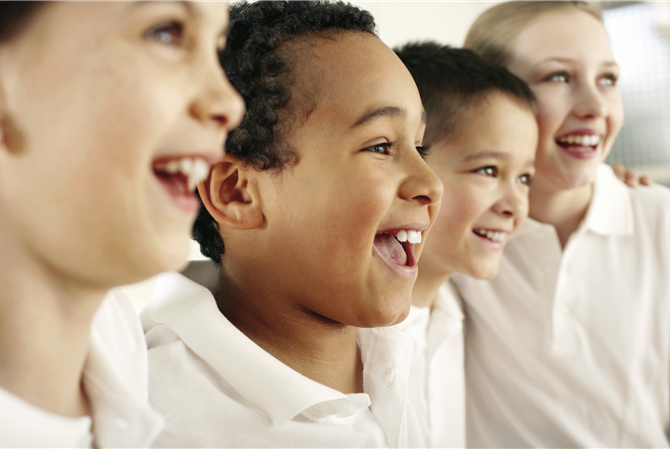
Ben and I first broached the idea of this book last decade and then spent some time ‘gathering’ chapter authors from around the world to give us as broad a canvas as possibleto paint a picture of Cooperative Learning in physical education. The first thing we needed to do was describe the wider literature of the field before exploring what Barrett described as the “beginning literature” of Cooperative Learning in physical education. In keeping with that idea this first blog will mirror that process.
Cooperative Learning is not a new area of research or practice. Research going back to the late nineteenth has shown that learning is enhanced when learners work cooperatively. That isn’t the same as putting people in groups and asking them to work together but is a deliberate and long-term development of an environment that is conducive to cooperation and therefore Cooperative Learning. The main – and foundational research – took place in the 1940s and was concerned with theories of social learning on performance (which at the time was an academic discussion but has since been applied to different domains i.e. cognitive, affective, social and physical). Despite the research done in the 40s, it wasn’t until the 1970s that Cooperative Learning (as a ‘set of principles and methods’) was linked to and used in education. It has since been shown, empirically, to enhance “social relationships, group dynamics, learning, and instruction”.
As with many theories of learning or pedagogical approaches there is no ‘one way’ of considering or understanding Cooperative Learning. In fact, the model (as I would describe it) has developed along four separate lines and with the help of four main protagonists.
The conceptual approach is the one best known in physical education and has, and continues to be, developed by David and Roger Johnson. It is conceptual because, unlike the other advocates of Cooperative Learning, they believe that once a teacher has learned the key principles of the model they are then able to adapt them to fit their own situations and classrooms. Robert Slavin and colleagues developed the curricular approach as a means of delivering specific learning outcomes in heterogeneous classrooms through the use of curriculum-specific approaches (such as STAD – See Vicky Goodyear’s Vlog for an explanation). Structural Cooperative Learning is based on the work of Spencer Kagan and centres on over 200 content-independent structures that can be used to master subject matter in any curriculum area (this is probably the second most widely used approach in physical education). The fourth approach, Complex Instruction, was developed by Elizabeth Cohen and sought to use heterogeneous groups to increase the “thinking, linguistic and academic skills of under-served children.”
At the heart of these approaches are a number of key procedures. While the four approaches value different elements of Cooperative Learning there are two common elements that the Johnson’s, Slavin, Kagan and Cohen do agree on. All suggest that Cooperative Learning – when approached and used deliberately – needs learners to be positively interdependent and individually accountable. That said, and since the conceptual approach has dominated the research and use of Cooperative Learning in physical education, Ben and I included the two elements above in a list of five key elements. We suggested that each of these needed to be deliberately included for any lesson to be considered as Cooperative Learning.
The five key elements of Cooperative Learning are defined as follows:
Positive Interdependence – students are linked to their peers in such a way that they cannot succeed without their peers also succeeding.
Individual Accountability – students are required to take responsibility for the completion of their part of any task.
Promotive Face-to-face interaction – students are frequently engaged in head-to-head discussion and negotiations within their groups that require some form of negotiations and collaboration.
Interpersonal and small-group skills – the development of behaviours that allow for free and easy communication between peers.
Group Processing – open dialogue or group discussions that relate to learning and lesson content that can occur at anytime in a lesson.
Research in general education and physical education has shown that Cooperative Learning can improve “academic achievement, active learning, social skill development and classroom equity”. Significantly, from a physical education perspective, the research has reported that motor and tactical skills can be developed through Cooperative Learning, as can social learning. In fact, research is increasingly suggesting that Cooperative Learning allows the teacher to place (and achieve) a similar emphasis on academic and social learning.
For many years skill development has been at the forefront of learning in physical education and research suggests that Cooperative Learning is well placed to support young people’s learning in this area. However, the model also allows and encourages teachers to “plan specific social skill, such as listening, working together and providing appropriate feedback to each other”. Detailed analysis of Cooperative Learning’s use in physical education revealed, “instruction time, management time, transitions and waiting time decreased significantly.” At the same time the use of “refining, extending and applying tasks” increased significantly. Cooperative Learning has also been shown to help students with both physical and mild intellectual disabilities to integrate with their peers without disability. Importantly the model values purposeful strategies (such as the structures of Kagan or curriculum approaches of Slavin) that accommodate such students.
The blogs coming from this book will explore Cooperative Learning from research in physical education. The book is international and has authors from the UK, New Zealand, the US, Spain, France, Germany and Australia. Each chapter explores a different perspective and as such the upcoming blogs focus on teacher professional learning, the role of the teacher and how and what students learn through Cooperative Learning. Hopefully, and as this book sets out to achieve, these blogs will further our understanding about Cooperative Learning in physical education.
Dyson, B. & Casey, A. (2014). Cooperative Learning in Physical Education: A research-based approach. London: Routledge.






